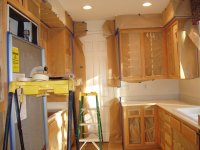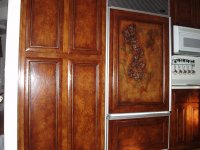I'm using an Earlex HV5500 HVLP sprayer to do furniture refinishing in my garage. Works fine and I've mostly had positive results etc.
I'd like to advance my spray finishing skill to the next level and attempt an indoor refinishing project. Specifically, I'm look at doing over my kitchen cabinets. Any advice for a first time interior project like this? Aside from removing the cabinet door for finishing separately, should I plan on sealing the kitchen off from the rest of the house? What about covering/protecting all services that I don't want paint on? For example, using HVLP, will I have to protect counter tops which are across the other side of the kitchen? How extensively do I need to protect the surroundings not targeted by the spray gun? I've seen plenty of references to interior finishing with HVLP, but is it all hype or legit?
I'd like to advance my spray finishing skill to the next level and attempt an indoor refinishing project. Specifically, I'm look at doing over my kitchen cabinets. Any advice for a first time interior project like this? Aside from removing the cabinet door for finishing separately, should I plan on sealing the kitchen off from the rest of the house? What about covering/protecting all services that I don't want paint on? For example, using HVLP, will I have to protect counter tops which are across the other side of the kitchen? How extensively do I need to protect the surroundings not targeted by the spray gun? I've seen plenty of references to interior finishing with HVLP, but is it all hype or legit?


